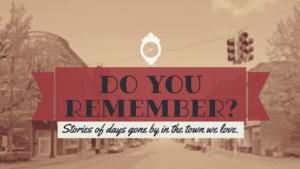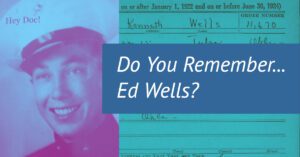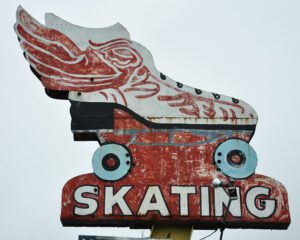John Fitzgerald Kennedy is considered by many to be the most popular president in U.S. history. I consider him to be one of the greatest presidents in my life because of his courage, compassion, and his undaunted resolve to make not just America a better place, but the entire world. He instilled in Americans the concept of selfless service to one’s country. I was only ten when JFK made that historic inaugural speech on January 20, 1961. Of all the inaugural speeches to which I have listened, one line from Kennedy’s speech is the only one ingrained in my memory: “Ask not what your country can do for you, but what you can do for your country.”

Kennedy graduated from Choate, a prestigious boarding school in Wallingford, Connecticut, where he was voted “Most Likely to Succeed.”
In 1940, Kennedy graduated cum laude from Harvard with a Bachelor of Arts in government, after completing his senior thesis, “Appeasement in Munich,” about British negotiations during the Munich Agreement. The thesis eventually became a bestseller under the title Why England Slept.
On September 24, 1941, Kennedy joined the United States Naval Reserve. He was commissioned to be an ensign on October 26, 1941. In 1943, he was sent to the South Pacific, where he was given command of a Patrol-Torpedo (PT) boat. In August of that year, a Japanese destroyer struck PT-109 in the Solomon Islands. Kennedy helped some of his crew back to safety and was awarded the Navy and Marine Corps Medal for heroism.
William Randolph Hearst, a family friend and famous publisher, encouraged Kennedy to pursue a career in journalism. However, he left the navy at the end of 1944 and returned to Boston to run for Congress as a “moderately conservative” Democrat. With his father’s financial backing, Jack (John) Kennedy handily defeated his Republican opponent. He was sworn into Congress in January 1947, at the age of 29. He was criticized by his peers for his casual style and youthful appearance.
Kennedy was reelected to the House of Representatives in 1948 and 1950, and in 1952 ran successfully for the U.S. Senate, defeating highly favored Republican incumbent Henry Cabot Lodge Jr.
Kennedy married glamorous and classically beautiful socialite and journalist Jacqueline (Jackie) Lee Bouvier on September 12, 1953.
While recovering from back surgery in 1955, Kennedy again wrote a best-selling book, titled, “Profiles in Courage,” which won the Pulitzer Prize for biography in 1957. It was subsequently discovered that Kenndy Aide, Peter Sorenson, heavily contributed to the book.
Kennedy announced his presidential candidacy on January 2, 1960. He defeated primary challenger, Hubert Humphrey, who was considered to be too liberal. Kennedy chose Senate majority leader Lyndon Baines Johnson of Texas, to be his Vice President.
In the general election, Kennedy faced a difficult race against Richard M. Nixon, who was a two-term vice president to Dwight D. Eisenhower.
But the youthful Kennedy had the advantage in the first televised presidential debate, and he won by less than 120,000 out of some 70 million votes cast. He became the youngest man and the first Roman Catholic to be elected President of the United States.
Kennedy, along with his lovely young wife and two small children, portrayed a youthful and glamorous presidency. As a matter of fact, the Kennedy administration was often referred to as “Camelot.”
In his inaugural address, Kennedy called on his fellow Americans to work together in the pursuit of peace and prosperity throughout the world, but also challenged Americans to win the ongoing Cold War against global communism.
The new president was presented with serious foreign policy challenges.
In April 1961, Kennedy approved the infamous Bay of Pigs operation, which was an invasion of Cuba involving 1,400 Cuban exiles to overthrow Fidel Castro. The mission ended in disaster, with nearly all participants killed or captured.
In June 1961, Kennedy met with Soviet leader Nikita Khrushchev in Vienna to discuss Berlin, Germany, which had been divided between Allied nations and the Soviets after World War II.
East German troops began erecting a wall two months later to divide the city. Kennedy sent Vice President Johnson, along with a convoy of military personnel, through West Germany, including Soviet-armed checkpoints, to demonstrate the U.S commitment to West Berlin.
In October 1962, after learning that the Soviet Union was constructing nuclear missile sites in Cuba which potentially posed a threat to the continental United States, Kennedy ordered a naval blockade of Cuba. This conflict was later dubbed “The Cuban Missile Crisis.”
After two tense weeks, an apprehensive world was relieved to hear that a diplomatic resolution had been reached. Soviet Premier, Nikita Khrushchev, agreed to dismantle Soviet missile sites in Cuba in exchange for a promise not to invade the island and that the U.S. remove Jupiter missiles from Turkey and other NATO (North Atlantic Treaty Organizations) sites.
One of Kennedy’s greatest foreign policy achievements was procuring a “partial” nuclear test ban treaty which banned testing nuclear weapons in the atmosphere, outer space, or underwater. The treaty was signed by Britain, the United States, and the Soviet Union.
President Kennedy escalated America’s involvement in Southeast Asia in an effort to curb the spread of communism.
On the domestic front, Kennedy was somewhat less successful. He created the Peace Corps, which over 50 years later, continues to send young volunteers to underdeveloped countries across the globe. In his short tenure as president, he was unable to accomplish much of his domestic policy goals, including two of his priorities, which were income tax cuts and a civil rights bill.
Kennedy announced his intention to submit a comprehensive civil rights bill to Congress and sanctioned the epic March on Washington that took place that August 1963.
President John F. Kennedy was assassinated in Dallas at 12:30 pm Central Standard Time on Friday, November 22, 1963. While traveling in a presidential motorcade through downtown Dallas, he was shot once in the back, the bullet exiting via his throat, and once in the head.
Kennedy was taken to Parkland Hospital for emergency medical treatment, where he was pronounced dead 30 minutes later. He died at the age of 46 and had been in office for only 1,036 days.
Lee Harvey Oswald, an employee at the Texas School Book Depository from which the shots were fired, was arrested for the murder of police officer J. D. Tippit and was later charged with Kennedy’s assassination.
Oswald denied the charges, stating that he was merely a “patsy.” On November 24, Oswald was fatally shot by local nightclub owner Jack Ruby. The shooting, which was witnessed by television viewers across the nation, occurred in the basement of Dallas Police Headquarters.
In September 1964, the Warren Commission concluded that Oswald acted alone when he assassinated Kennedy by firing three shots from the Texas School Book Depository. The findings, though thoroughly supported by intense investigation, remain controversial and have given rise to a plethora of conspiracy theories.
A Requiem Mass was celebrated for Kennedy at the Cathedral of St. Matthew the Apostle on November 25, 1963. Kennedy was interred in a small plot in Arlington National Cemetery. From 1964 to 1966, an estimated 16 million people visited President Kennedy’s grave. On March 14, 1967, Kennedy’s remains were disinterred and moved a few feet away to a permanent burial plot and memorial.
I was in Sam Houghton’s art class when the news that Kennedy had been assassinated came over the intercom. At first, I thought, “This can’t be happening.”’ When the reality of the situation quickly sunk in, I started crying. My president, a president who inspired me, a president I thought was going to make the world a better place, had been cut down in his prime. I often wonder what the world would be like today had he lived to fulfill his destiny.










